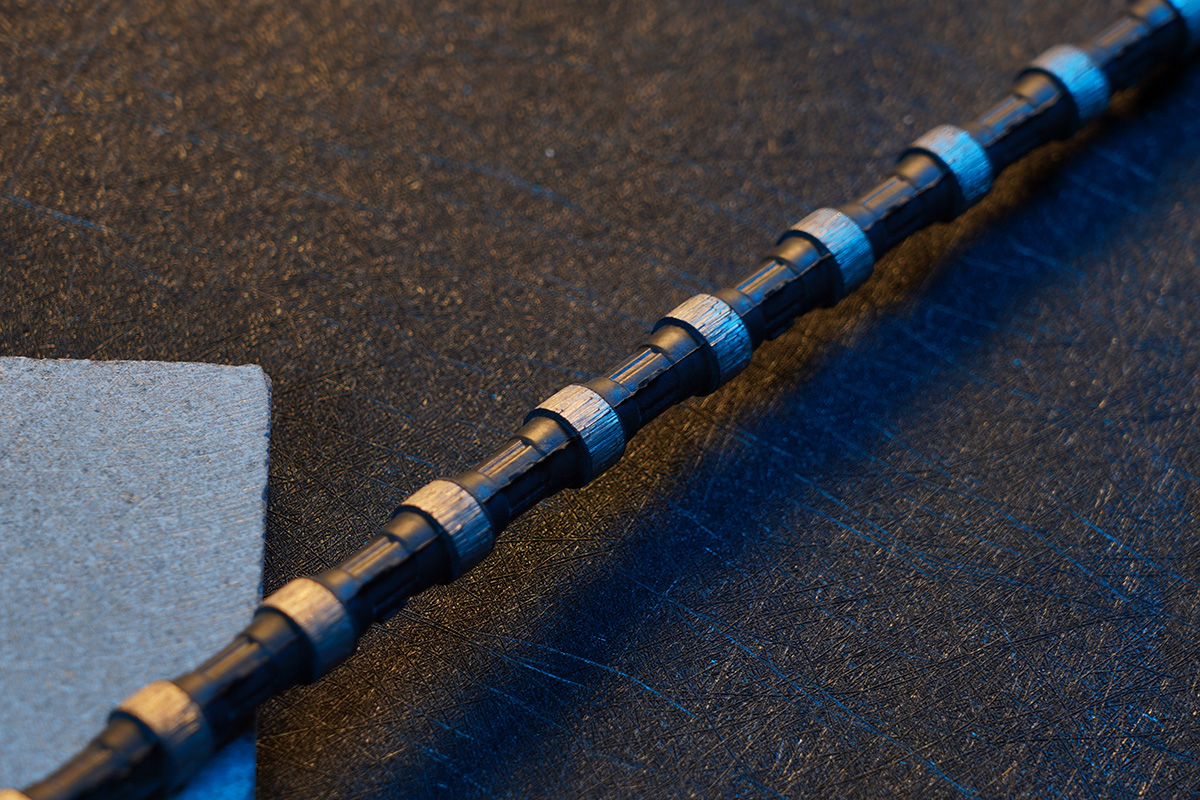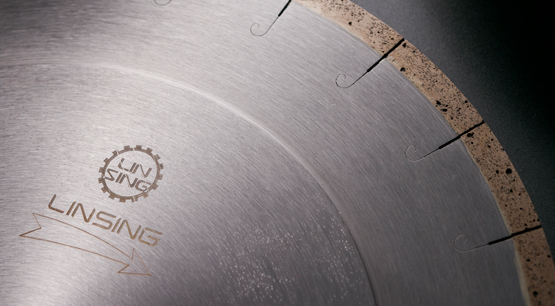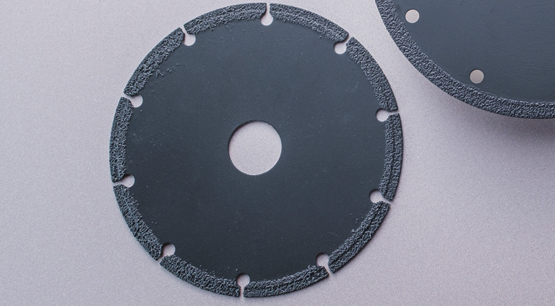The linear speed of the diamond wire saw refers to the linear motion speed of the diamond segments on the wire, usually expressed in meters per second (m/s). The line speed is a crucial parameter for the diamond wire saw during the cutting of minerals or stones, as it directly affects the cutting efficiency and quality.
The line speed of the diamond wire saw depends on several factors, including the type and specifications of the wire saw machine, the diameter of the wire saw, and the power of the main motor. Generally, the line speed of the diamond wire saw has a wide range, typically between 20 to 40 meters per second.
When it comes to the line speed of the diamond wire saw, several factors need to be considered, as it directly influences the cutting efficiency and quality. Here are more detailed explanations of the main factors that affect the line speed of the diamond wire saw:
1. Type and specifications of the wire saw machine: Different types and specifications of wire saw machines have different drive systems and transmission devices. Typically, larger wire saw machines have higher power and stronger driving capabilities, resulting in higher line speeds.
2. Diameter of the wire saw: A larger diameter of the wire saw results in a higher line speed at the same rotation speed. Larger wire saw segments can cover a larger cutting area, thereby achieving higher line speeds.
3. Power of the main motor: The higher the power of the main motor in the wire saw machine, the stronger the driving force it provides, and the correspondingly higher line speed. High-power main motors are usually suitable for processing harder minerals and stones.
4. Material and quality of the wire saw segments: The diamond segments on the wire saw have a direct impact on the line speed. Higher-quality diamond segments can cut materials more effectively, thus achieving higher line speeds.
5. Tension of the wire saw: Proper tension of the wire saw ensures stable movement, and both too low or too high tension can affect the line speed. The tension of the wire saw should be adjusted based on the hardness of the cutting material and the diameter of the wire saw segments.
6. Hardness of the cutting material: Different hardness levels of minerals or stones require different cutting forces, which affect the selection of line speed. Harder materials require higher line speeds for effective cutting.
7. Cutting quality requirements: Different cutting quality requirements may call for adjustments in line speed. For example, rough cutting and fine cutting may require different line speeds to meet different cutting quality demands.
In summary, selecting the line speed of the diamond wire saw requires comprehensive consideration of the above factors and adjustments based on the actual situation. Proper selection and control of line speed can ensure cutting efficiency, cutting quality, and prolong the service life of the diamond wire saw. It is recommended to follow the technical parameters and usage instructions provided by the manufacturer when using the diamond wire saw to ensure safe and effective cutting operations.
Lower line speeds are suitable for cutting harder minerals or stones as harder materials require greater cutting force, and lower line speeds can better control the cutting process and prevent overcutting. On the other hand, higher line speeds are suitable for cutting softer minerals or stones as softer materials require smaller cutting force, and higher line speeds can improve cutting efficiency.
In conclusion, choosing the appropriate line speed is crucial for ensuring the normal operation and improving the cutting efficiency of the diamond wire saw. Too high or too low line speed may result in unsatisfactory cutting effects or even damage to the wire saw. Therefore, it is necessary to adjust the line speed according to the actual situation when using the diamond wire saw, to achieve the best cutting performance.











